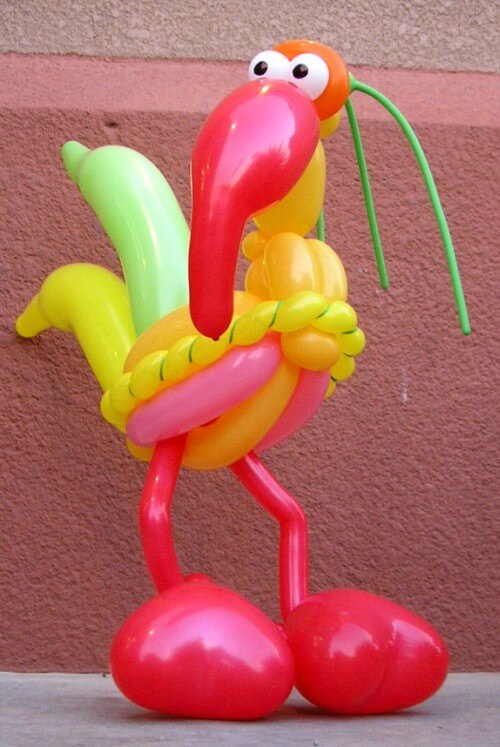Struggling to price arches & garlands? This NEW simple calculator does the math for you.
- Home
- Hits for Kids
- How to Make Balloon Animals
How to Make Balloon Animals
- A Beginner's Guide -
Wondering how to make balloon animals? Isn't it fascinating to watch how a long thin balloon "sausage" turns into one of those delicate, twisted creatures which delight kids and adults alike?
If you make a purchase through a link on my site, I may receive a small commission at no extra cost to you. I only recommend products that I believe to have good value (affiliate disclosure).
With our tips, some practice and patience, you are well off to create your first balloon dog, bear or elephant.
How to Make Balloon Animals - General Tips and Tricks
BloonsUp's focus is on balloon decorating, and balloon twisting is a whole science of its own. So please take the following tips as what they are - some basic advice to get you started.
At the end of this article, you will find some videos and links to more advanced instructions.
- The most frequently used balloons for making animals are the "160" and the "260". The balloon numbers come from the approximate size of the balloons: 1 or 2 inches in diameter, and 60 inches in length gives "160" or "260".
- Use only high-quality balloons when creating animals so they will not burst on you. They might cost a bit more, but in the end will save you money. Well known brands are Qualatex, Betallic and Sempertex.
- Instead of embarrassing yourself by trying to blow the balloons up by mouth, I would recommend to use a good hand pump. Dual action hand pumps inflate the balloon with both push and pull motion, achieving a fast result. If you have an electrical inflator, you can use that as well, of course.
- Never inflate the entire balloon, leave about three inches of a so-called tail at the end. This gives the pressurized air in the inflated part someplace to go while modelling your balloon.
- Always start at the end with the knot when you begin twisting the balloon so that the air can be moved down the balloon into the tail that you left.
- Make all of your twists in the same direction to keep them in place, and don't let go of them until you've "locked" them. More about this in the video below.
- It works better when you use one hand as your holding hand and the other for twisting. Hold the already twisted part and work your way down the free part.
- A softer balloon is easier to practice shapes on, so don't inflate your balloons fully when you are practicing.
- Keep your hands dry when modeling the balloons. Use talcum powder if necessary.
Balloon Animals Twisting Techniques
Phew, that's a lot of theory. How about some practice now? With just a handful of twisting techniques, you can create most balloon animals or other shapes, such as flowers and swords.
I hope you'll find the following video from Joey's Balloon Company as helpful as I did. You'll see all of the above tips in action, including 5 basic twisting techniques:
- Ear or Pinch Twist
- Pedal or Loop Twist
- Apple or Tulip Twist
- Balloon Bulb
- Connecting two balloons
At the end he shows how to break one long sausage balloon into two parts without destroying them! Amazing.

Hooked on balloon twisting? If you want to get more step-by-step instructions how to make balloon animals as well as other fancy shapes, I recommend that you check out Joey Balloon's YouTube channel. Their "Balloon Twisting" playlist has 50+ video tutorials.
But wait! You'll need balloons and a pump first. Because you will only learn how to make balloon animals by doing it yourself. Watching alone is not enough.

If you are just getting started, then this Balloon Animal Kit is a good idea.
It contains 100 assorted color premium twisting balloons, a dual action air pump, an instructional book and access to a whole online video series.
Or browse through a selection of balloon twisting supplies.





![Balloon Drop at a Party [Image Source: Eventbrite.com]](/image-thumbnails/how-can-i-make-a-balloon-drop-for-a-wedding-and-is-there-a-way-of-releasing-them-21850402.jpg/default.webp)
![Balloon Heart Frame [Image source: Aliexpress.com]](/image-thumbnails/where-can-i-buy-balloon-heart-frames-21973261.jpg/default.webp)
Have your say about what you just read!
Leave me a comment in the box below. Don't see the comments box? Log into your Facebook account, give Facebook consent, then return to this page and refresh it.